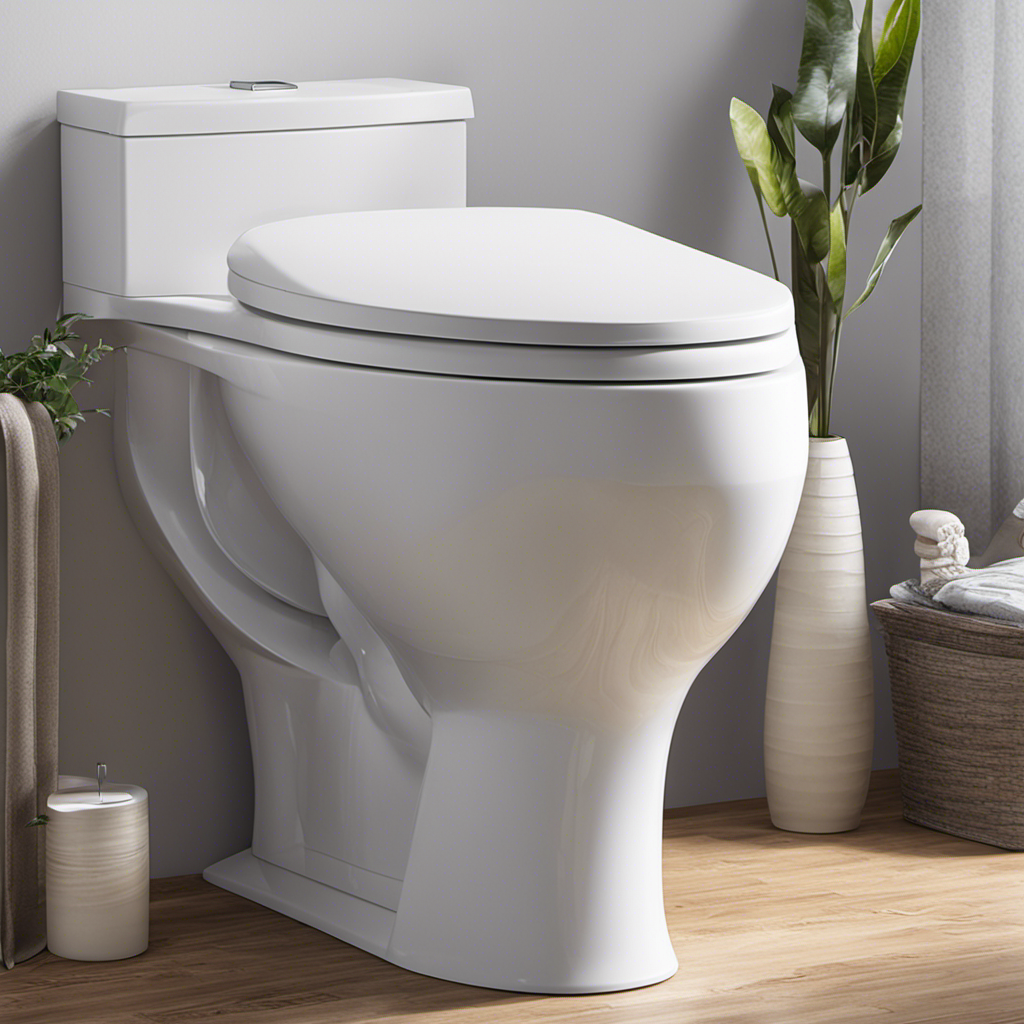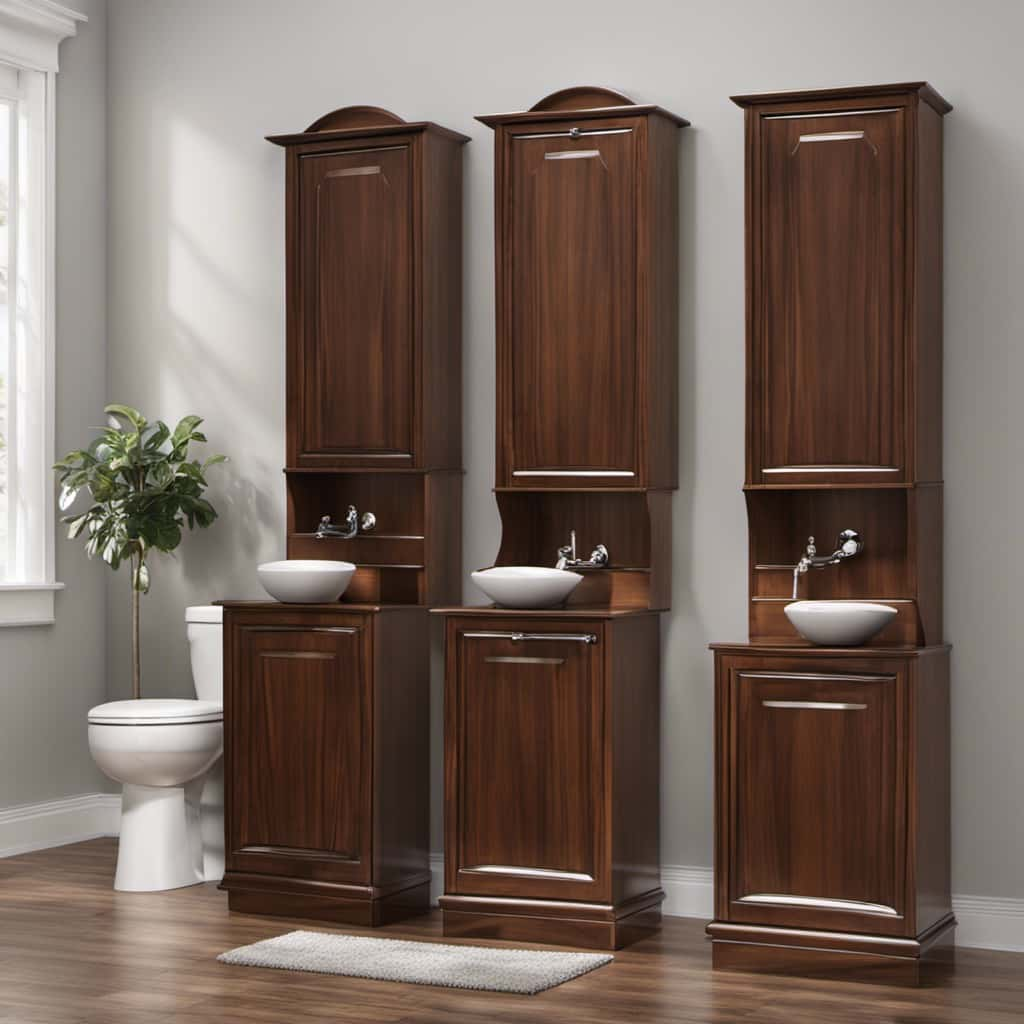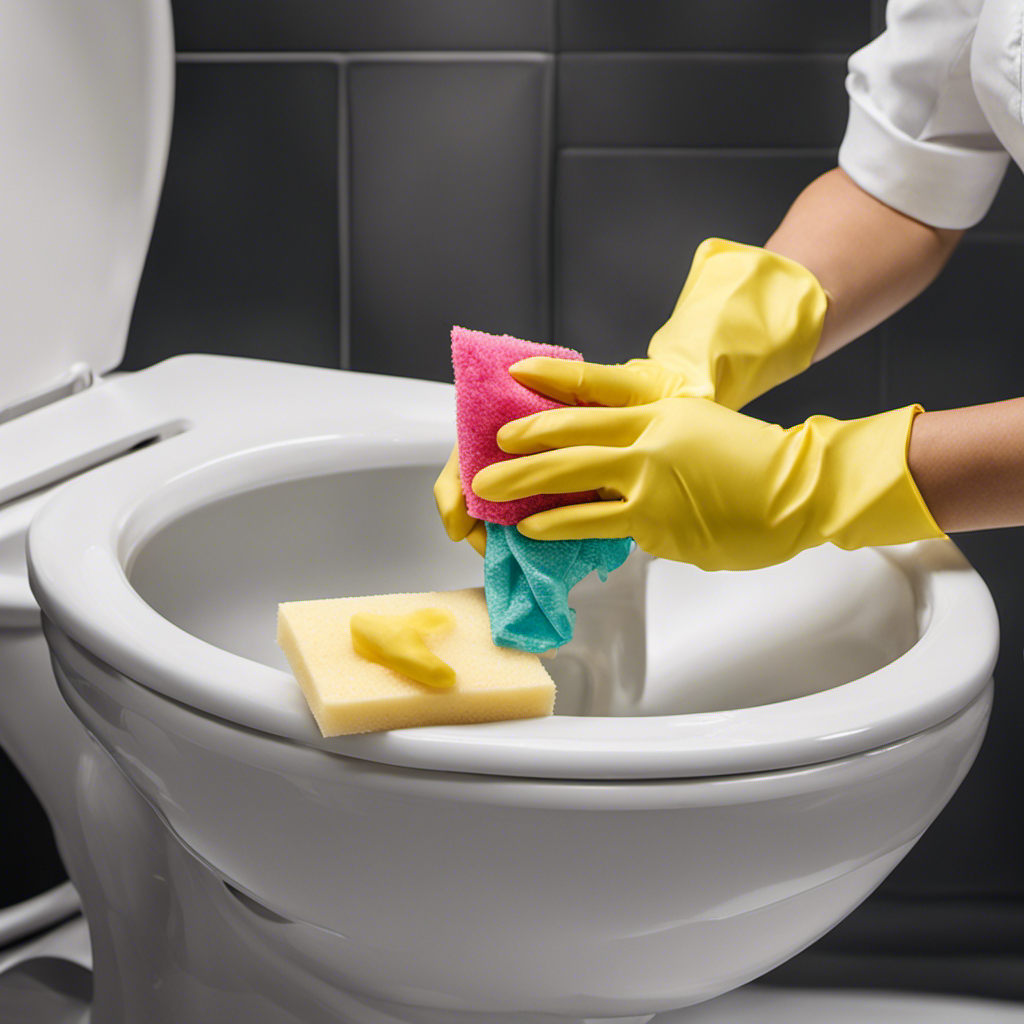Did you know that a low water level in your toilet can lead to inefficient flushing and potential clogs? Well, fear not! In this article, I’ll guide you through the steps to raise the water level in your toilet to ensure optimal functionality.
By understanding the toilet’s water level, checking the water supply valve, adjusting the float ball or cup, and cleaning the fill valve, you’ll be able to tackle this common issue with confidence.
So let’s get started and get that water level where it needs to be!
Key Takeaways
- The fill valve and float mechanism control the water level in a toilet.
- Checking the water supply valve is important to ensure it is fully open.
- Adjusting the float ball or cup is necessary to maintain the correct water level.
- Regular cleaning of the fill valve helps prevent issues and extends its lifespan.
Understanding the Toilet’s Water Level
To understand the toilet’s water level, it’s important to know how the fill valve and float mechanism work. These components are critical for the toilet’s water efficiency and play a key role in maintaining the proper water level in the tank.
The fill valve is responsible for controlling the water flow into the tank after each flush. It opens when the flush lever is pressed and closes once the tank is filled.
The float mechanism, on the other hand, is connected to the fill valve and helps regulate the water level. If the water level is too low, it could indicate a problem with the fill valve or float mechanism, which can lead to common toilet water issues like weak flushes or incomplete refilling.
Understanding how these components work is crucial for troubleshooting common toilet water issues.
Now that we’ve covered understanding the toilet’s water level, let’s move on to checking the water supply valve.
Checking the Water Supply Valve
Check if the water supply valve is fully open. This is an important step in ensuring that the toilet has enough water to function properly. If the valve is not fully open, it can restrict the flow of water into the toilet tank, resulting in a low water level.
To check the valve, locate it near the bottom of the toilet, usually on the wall or floor. Turn the valve counterclockwise to open it fully. Once the valve is open, you can proceed with replacing the toilet tank or checking for water leaks. Make sure to inspect all connections and seals for any signs of leakage, as this can also affect the water level in the toilet.
Leaky connections can lead to water damage and higher water bills.
A low water level can affect the toilet’s flushing power and efficiency.
Checking for leaks regularly can prevent costly repairs and conserve water.
Adjusting the Float Ball or Cup
The float ball or cup can be adjusted to ensure proper water flow in the toilet tank. This float adjustment is crucial for maintaining the correct water level in the tank.
If the water level is too low, it may result in weak flushes or incomplete refilling of the bowl. On the other hand, if the water level is too high, it can cause water to overflow into the bowl or even leak from the tank.
To adjust the float ball or cup, locate the adjustment screw or clip on the fill valve. By turning the screw or moving the clip, you can modify the position of the float, thereby controlling the water level. Once the desired water level is achieved, tighten the adjustment screw or secure the clip.
Now that we have discussed float adjustment, let’s move on to the next step: cleaning the toilet’s fill valve.
Cleaning the Toilet’s Fill Valve
Now you need to clean the fill valve in your toilet. Cleaning the fill valve is an essential step in maintaining your toilet’s proper functioning. Follow these cleaning instructions to ensure optimal performance and prevent potential issues:
-
Regular maintenance: Cleaning the fill valve regularly helps prevent clogs and ensures a smooth water flow.
-
Troubleshooting tips: If you notice a decrease in water level or a hissing sound, cleaning the fill valve might solve the problem.
-
Extend the lifespan: By cleaning the fill valve, you can extend its lifespan and avoid costly repairs or replacements.
To clean the fill valve, start by turning off the water supply to the toilet. Remove the lid of the tank and locate the fill valve. Use a brush or cloth to remove any debris or sediment from the valve. If necessary, soak the valve in vinegar for a few minutes to remove stubborn build-up. Rinse the valve thoroughly and reassemble it.
Turn the water supply back on and check for any leaks. Regularly cleaning the fill valve will ensure a well-functioning toilet for years to come.
Seeking Professional Help
If you’re experiencing issues, it may be time to seek professional help for your toilet. While there are various DIY methods available, sometimes the problem requires the expertise of a plumbing service.
When it comes to raising the water level in a toilet, it’s important to understand the underlying cause. A professional plumber can assess the situation and identify any potential problems with the fill valve, water supply, or other components. They have the knowledge and experience to provide precise solutions, ensuring that the water level is adjusted correctly and efficiently.
Attempting DIY methods without the proper understanding can lead to further complications and potential damage. By seeking professional help, you can have peace of mind knowing that your toilet will be fixed properly and efficiently.
Frequently Asked Questions
Can a Toilet’s Water Level Be Adjusted Without Checking the Water Supply Valve?
Yes, the water level in a toilet can be adjusted without checking the water supply valve. The adjusting mechanism inside the toilet tank allows for precise water supply adjustment to raise the water level.
What Should I Do if Adjusting the Float Ball or Cup Doesn’t Raise the Water Level in the Toilet?
If adjusting the float ball or cup doesn’t raise the water level in the toilet, there are alternative methods to try. Troubleshooting tips can help diagnose the issue and find a solution.
Is It Necessary to Clean the Toilet’s Fill Valve Regularly, or Only When the Water Level Is Low?
Cleaning frequency for a toilet’s fill valve depends on the water level. If the water level is low, it’s necessary to clean it regularly. However, if alternative methods raise the water level, cleaning can be less frequent.
Can a Professional Plumber Help in Raising the Water Level in a Toilet if All the Previous Steps Have Been Followed?
A professional plumber can be a valuable resource when troubleshooting toilet water level issues. They have the expertise to assess the situation and recommend the appropriate steps to raise the water level, even if previous attempts have been unsuccessful.
Are There Any Potential Risks or Complications Associated With Attempting to Raise the Water Level in a Toilet on My Own?
Attempting to raise the water level in a toilet on my own may pose potential risks and complications. It is crucial to consider the DIY approach’s technicality, as any mistakes could lead to further problems.
Conclusion
To conclude, raising the water level in a toilet is a simple task that can be done by anyone. By understanding the toilet’s water level, checking the water supply valve, adjusting the float ball or cup, and cleaning the fill valve, you can ensure that your toilet is functioning properly.
However, if you encounter any difficulties or if the problem persists, it is advisable to seek professional help. A properly functioning toilet is essential for a clean and hygienic bathroom environment.
Fun fact: Did you know that the average person flushes the toilet about 2,500 times a year?










